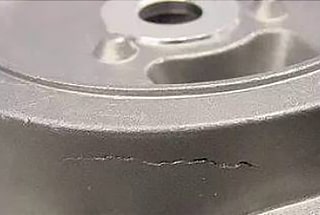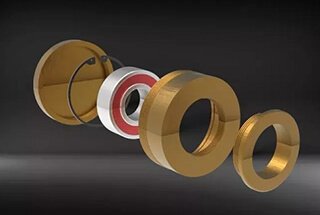During the operation of sliding spiral, it mainly bears the action of torque and axial tension (or pressure).
At the same time, there is significant relative sliding between screw and nut’s thread when they rotate with each other. The main form of failure is thread wear.
Therefore, the basic size of sliding spiral is usually determined based on wear resistance conditions.

Calculation of the Wear Resistance of the Screw
Given: F=41048 (N), according to “Mechanical Design”:

For trapezoidal thread, if h=0.5P, then according to “Mechanical Design”, [p]=22 MP.
Therefore,

where Φ=4 can be taken for high transmission precision, heavy load, and long service life.
[p] is the allowable pressure of the material, according to “Mechanical Design”, [p]=22 MPa.

d² can be taken as 50.5mm to meet the requirement of d². Therefore, the nominal diameter d=55mm.
External thread diameter d3=45mm.
Internal thread diameter D4=56mm and D1=46mm.
Thread pitch p=9mm.
Nut height H=202mm.
Calculation of Screw Strength
Given the torque.

According to “Mechanical Design”, for general threads with M10~M16, tanφv=0.17.

Given D=100mm and t=25mm,

Therefore,

Critical cross-sectional area,

Where A is the minimum cross-sectional area of the screw.

According to “Mechanical Design”, σs=320~360 MPa. Thus, σca ≤ [σ]. Therefore, the conclusion is that the screw data previously taken meets the strength requirements.
Calculation of Nut Strength
As the material strength of the nut is lower than that of the screw, it is only necessary to check the strength of the nut thread. Take nut height H=202mm. The bending strength condition of the dangerous cross-section a—a of the thread is:

where b is the thickness of the thread root, mm. For trapezoidal threads, b=0.65P=5.85mm.
l is the bending moment arm, mm.

[τ] is the allowable shear stress of the nut material.
[σb] is the allowable bending stress of the nut material.
Therefore,

Both left-hand and right-hand nuts are 101mm in height.
Calculation of Screw Stability
The critical load Fcr can be calculated by the Euler formula.

where E is the tensile and compressive modulus of elasticity of the screw material, Mpa, E=2.06×105 Mpa.

I is the moment of inertia of the dangerous cross-section of the screw, mm4.
Therefore,

Therefore, the conclusion is that the stability of the screw is reliable.


